Case Studies.
Add Case Study
Our Case Study database tracks 22,657 case studies in the global enterprise technology ecosystem.
Filters allow you to explore case studies quickly and efficiently.
Download Excel
Filters
-
(6,653)
- (2,601)
- (2,127)
- (945)
- View all
-
(5,642)
- (2,469)
- (1,692)
- (826)
- View all
-
(5,571)
- (2,178)
- (1,766)
- (643)
- View all
-
(5,247)
- (2,179)
- (1,715)
- (1,321)
- View all
-
(2,881)
- (1,448)
- (574)
- (376)
- View all
- View all 15 Technologies
- (1,985)
- (1,985)
- (1,915)
- (1,679)
- (1,629)
- View all 42 Industries
- (8,728)
- (4,742)
- (3,618)
- (3,233)
- (2,947)
- View all 13 Functional Areas
- (3,304)
- (2,787)
- (2,603)
- (2,006)
- (1,630)
- View all 129 Use Cases
- (13,581)
- (5,296)
- (4,272)
- (3,520)
- (2,856)
- View all 9 Services
- (504)
- (432)
- (416)
- (382)
- (301)
- View all 1083 Suppliers
Selected Filters

|
Enhancing Autonomous Trucking with Synthetic Data: A Kodiak Robotics Case Study
Kodiak Robotics, an autonomous technology company, is developing self-driving capabilities for the long-haul trucking industry. The company uses a unique sensor fusion system and a lightweight mapping solution to navigate highway driving and deliver freight efficiently. However, the company faced a significant challenge in training its software to handle rare scenarios, such as pedestrians walking on the highway. These edge cases are crucial for a production-level autonomous vehicle system, but collecting enough real-world examples to train the models reliably was proving difficult.
|
|
|
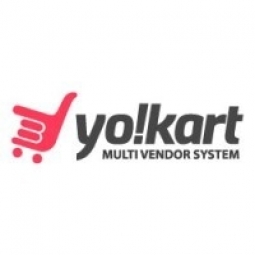
|
Go Ethnyk: A Thriving Cosmetics Marketplace Powered by Yo!Kart
Missinn Aklo, the founder of Go Ethnyk, envisioned a specialized marketplace for selling beauty, cosmetics, and perfume products for every skin type. His goal was to assist small retailers and enterprises in gaining more brand exposure and creating a network of loyal consumers. He wanted to provide young brands and small retailers with a platform to sell cosmetic products quickly and easily. His vision was to create an online marketplace for all ethnicities, regardless of age or gender, providing them with essential eCommerce tools to sell and develop their business on the web. However, the challenge was to create such a platform without imposing hefty subscription charges on the sellers.
|
|
|

|
IoT Case Study: Building weDIY - A Thriving Online Marketplace for Handmade Items
The online handmade products industry in Germany has seen a significant surge in growth over the last two decades, with the eCommerce revenue in the DIY sector expected to reach US$55.39 billion by 2023. This growth is largely attributed to creative DIY online marketplaces like Etsy and weDIY. However, creating such a platform that caters to the unique needs of creative designers and sellers, while also providing a seamless shopping experience for consumers, presents a significant challenge. Erkan Eroglu, the founder of weDIY, envisioned a platform that would serve as a virtual hub for designers, artists, and creative individuals to exchange ideas, interact with sellers, rate and purchase products, and find inspiration. The challenge was to create a platform that would bridge the gap between creative individuals and buyers passionate about acquiring handmade products and value the associated benefits such as environmental sustainability and superior quality.
|
|
|

|
Hyper-localization: The Key to Canva's Global Success
Canva, an online design and publishing tool, was launched in 2013 with a mission to empower everyone in the world to design anything and publish anywhere. Today, Canva has over 60 million monthly active users, half of whom are non-English speakers, and the platform is available in over 130 languages. The challenge for Canva was to make the tool as accessible as possible to users across the globe and provide the best user experience, no matter what language they speak. This required a deep understanding of the subtle differences in cultures and languages, and the unique needs of the audiences in a scalable way. The challenge was also to maintain the Canva brand while heavily customizing the product for many different regions.
|
|
|
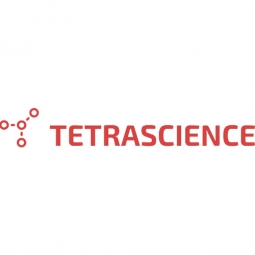
|
Driving Cost-Effective CRO Collaboration through IoT
Pharmaceutical and biotech organizations frequently collaborate with Contract Research Organizations (CROs) for absorption, distribution, metabolism, and excretion (ADME) testing of pharmacokinetics (PK) properties of drug candidates. However, most CROs use their own data formats for standard assays, which can pose data aggregation challenges to biopharma companies. The ability to harmonize data from different CRO reports is critical to scale up ADME/PK processes. The manual data workflows for pharmacokinetics and pharmacodynamics (PK/PD) studies are laborious. Scientists have to manually check the reports from CROs, which is time-consuming and prone to errors.
|
|
|
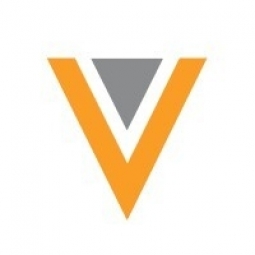
|
Illumina Streamlines Study Builds and Eliminates Regression Testing with Veeva Vault CDMS
Illumina, a leading biotechnology company, was facing significant challenges in managing their study builds. The traditional process involved authoring and reviewing specifications for over three months, after which the Contract Research Organization (CRO) would build the database. This process was not only time-consuming but also lacked efficiency and agility. The study team would then review the specifications, which was a manual, paper-based process. Additionally, Illumina was conducting 100% regression testing during User Acceptance Testing (UAT), which was a significant burden. The company was also running a COVID-19 diagnostics trial during the pandemic, which required great flexibility and rapid changes.
|
|
|

|
Pacira Streamlines Promotional Material Submissions with Veeva's IoT Solution
Pacira, a pharmaceutical company, was facing challenges in streamlining its promotional material submissions process. The company was using inefficient paper- and email-based approaches that were not only time-consuming but also lacked the necessary speed and efficiency. The situation was further exacerbated during the pandemic when remote workers did not have access to high-speed printers. Additionally, as Pacira's regulatory department grew, they needed to replace SharePoint with a secure, part 11 compliant system for collaborative authoring and submissions. The company was also looking for a solution that could manage promotional submissions together with their other regulatory submissions on the same platform.
|
|
|

|
Roche's Global-to-Local Content Strategy: A Case Study in Pharma
Roche, a large biopharma company based in Basel, Switzerland, was faced with the challenge of balancing a global content strategy with local needs. The company recognized the need for a global-to-local strategy for several reasons. Firstly, the company wanted to reuse content to limit duplication of effort and cost. Secondly, the global-to-local approach was deemed essential for setting up a modular content model. Thirdly, the strategy would help deliver a framework for personalized content and a consistent brand experience. The company wanted to ensure that patients and customers have the same brand experience regardless of their location. Lastly, operational efficiency was a priority, and the global-to-local blueprint was seen as a way to manage and drive change more easily internally than with external business partners.
|
|
|
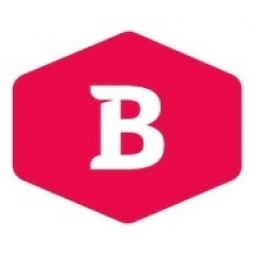
|
Houthoff's Digital Transformation: Optimizing Project Coordination with IoT
Houthoff, a top-tier independent Dutch law firm, was facing challenges in managing and coordinating their projects efficiently. The firm operates globally with offices in Amsterdam, Rotterdam, Brussels, London, and New York, and representatives in Asia and the United States. The rapidly changing legal landscape necessitated quick adaptation and constant communication with clients about the impact on their business. However, the traditional methods of work distribution and assigning lawyers to matters were proving insufficient. The firm was struggling with the growing challenge of staying fully informed and keeping everybody involved and happy in an era dominated by hybrid working, increased workloads, time pressure, and labor shortages. Especially for large complex matters, setting up a team with lawyers from different practice groups across the firm was a daunting task for a partner. Moreover, ensuring a balanced workload for lawyers to prevent any risk of overload was also a significant concern.
|
|
|
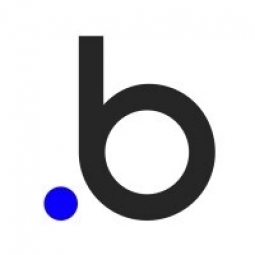
|
Driving Blog Traffic and Exposure with Blogable: An IoT Case Study
The founder of Blogable, Dylan Anderson, was faced with the challenge of driving traffic to his websites and apps without having to pay for expensive advertising. He wanted to create a platform where users could share their blogs in one place, thereby increasing their visibility and following. The main goal was to allow users to share their content with people who are genuinely interested in it, without the need for costly advertisements. The challenge was to create a platform that was easy to use, efficient, and effective in driving traffic to users' websites.
|
|
|

|
Datalogz: Revolutionizing Data Management with IoT
The founder of Datalogz, Logan Havern, was frustrated with the outdated and complicated modes of logging and collecting data. Traditional data management systems were not only expensive, costing thousands of dollars, but also time-consuming, taking months to implement. Moreover, these systems often resulted in data disorganization and required complicated IT procedures. The data documentation was usually confusing, commonly located in a spreadsheet or a word document. This led to a lack of a centralized repository for teams to organize their data dictionaries, answer essential questions, provide up-to-date data notifications, and publish recent work or analysis.
|
|
|

|
Dev Shopper: Revolutionizing the Search for Reputable Developers
Finding reputable software developers for tech projects can be a daunting task. The process often involves extensive research, multiple interviews, and a significant amount of time. The challenge is even greater for individuals or companies who need to find a developer within a short timeframe. The traditional process of finding a developer is not only time-consuming but also lacks transparency and efficiency. This is the situation that Dev Shopper, a platform that connects people and companies with reputable software development service providers, sought to address.
|
|
|

|
Nooz Optics' Global Expansion Accelerated by Brightpearl Integration
Nooz Optics, a France-based eyewear brand, was facing significant operational challenges despite its global success. The company, known for its innovative sunglasses, reading glasses, and children’s eyewear, had four successful Shopify-powered websites in multiple regions, including Europe, UK, Canada, and the USA. However, its internal systems were struggling to keep up with the increased orders, manual workflows, and a lack of visibility. The company was spending a significant amount of time and energy on time-consuming manual processes and stop-gap spreadsheets. This was not only inefficient but also affected the company's Trustpilot score, which was at a low of one.
|
|
|
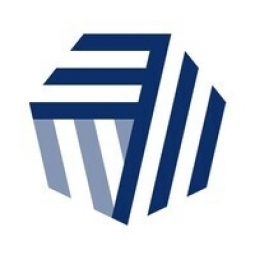
|
Digital Transformation Success: AMF Magnetics' Journey with Cin7, Xero, Shopify Plus and Shippit
AMF Magnetics, the largest supplier of permanent magnets in Australia, was facing challenges in managing its complex business operations. The company caters to a diverse range of customers, from large B2B orders to specialist medical equipment and casual D2C customers, and deals with multiple suppliers in different locations. The company's commitment to uncompromising customer service added to the complexity. Despite digitizing to some extent and using MYOB desktop software for inventory and accounting, the company found its operational processes inefficient and limiting its growth. The need for a digital transformation was evident, but the path to it was unclear.
|
|
|

|
Inventory Management Transformation at Fire Department Coffee
Fire Department Coffee (FDC), a veteran-owned e-commerce coffee company, was facing challenges in managing its inventory as the business grew. The company, run by active and retired firefighters, ships coffee globally, necessitating a robust and efficient inventory system. The existing system was not equipped to handle the increasing complexity and scale of operations, leading to inefficiencies and potential errors in order fulfillment. The company needed a solution that could seamlessly integrate with their existing platforms like Shipstation, Shopify, and Faire, and help them manage their day-to-day warehouse tasks effectively.
|
|
|
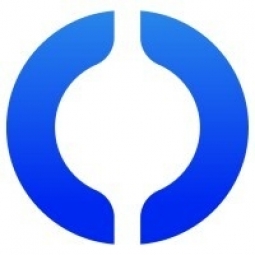
|
Everten Group's Transformation with Fishbowl's IoT Solution
Everten Group, a family-owned kitchenware shop in Australia, was facing challenges in managing its warehouse operations. As one of Australia's first online kitchenware retailers, Everten had to ensure seamless order fulfillment both nationally and internationally. The company had a wide range of products to cater to commercial, professional chefs, and home cooks. The Everten Group also housed several businesses that relied heavily on efficient warehouse management for online order fulfillment. The challenge was to manage purchasing, stock management, and sales order processing effectively for all these businesses. The company needed a solution that could serve as a central nervous system, managing orders from their websites and integrating them into their shipping software.
|
|
|

|
Maxwell Counters: Enhancing Consistency and Efficiency through Workflow Organization
Maxwell Counters, a company specializing in the fabrication, installation, and replacement of countertops, was facing a significant challenge in enhancing employee efficiency. The company had implemented a system where employees were required to document their business procedures on paper, which were then compiled into binders for reference. Additionally, processes were also documented in Microsoft Word documents saved on a network folder. However, these methods proved to be inefficient as the paper documents would often fall apart and the digital documents were not readily accessible. This resulted in employees constantly searching for documents or asking questions, leading to a decrease in productivity. The General Manager, Austin Maxwell, recognized the need for a more efficient system to streamline their processes.
|
|
|

|
Leveraging IoT for Knowledge Management: A Case Study of New Media Retailer
New Media Retailer, an online solutions company, was grappling with the fast-paced nature of the digital technology industry. The company was struggling to keep its employees updated with the latest trends and developments. The traditional method of documenting business processes and distributing them in print form to employees was proving ineffective, as the information would become obsolete within a week. Additionally, there was a significant knowledge gap between the in-office and remote employees, with the latter lacking access to certain information. These challenges were exacerbated as the company's remote workforce grew, necessitating a solution to ensure effective communication and knowledge distribution.
|
|
|

|
Onogo's Growth Enhancement through Employee Knowledge and Skills Development
Onogo, an e-commerce business and elite Amazon seller, faced a significant challenge as it began to expand. The rising demands from customers and partners necessitated a more solid operational structure and a robust workflow system. The absence of such a system made it difficult for the company to keep up with the changes and manage its growth effectively. The company's fate hinged on how it would handle this situation. The primary task was to find an effective workflow software that would not only manage the change but also be a part of the company for the long haul.
|
|
|

|
Streamlining Workflow and Enhancing Customer Satisfaction: A Case Study on Rise25 and SweetProcess
Rise25, a company that connects businesses to their clients through effective podcast and content marketing strategies, was struggling with managing their workflow. The co-founder, Dr. Jeremy Weisz, recognized the importance of having detailed standard operating procedures (SOPs) to organize the many moving parts involved in launching and managing successful podcasts. However, the SOPs created in Google Docs were unstructured and difficult to work with. The team found it challenging to execute tasks successfully, even with the documented procedures. The documentation system they were using was not effective, and the team often had to rely on Jeremy for help, creating a bottleneck situation. This was not sustainable in the long run and was hindering the company's growth and customer satisfaction levels.
|
|
|

|
Golden State Foods: Leveraging Digital Work Instructions for Optimal Performance
Golden State Foods (GSF), one of the largest diversified suppliers to the food service industry, faced a challenge in maintaining consistency and quality across their operations. With approximately 125,000 restaurants in over 50 countries as its customers and services provided from 50 locations worldwide, GSF needed to standardize their internal procedures and onboarding processes. The food industry's emphasis on quality and GSF's core values of innovation and customer service necessitated this standardization. The company also faced staffing issues and needed to ensure that their highly trained operators could easily transfer knowledge to others and articulate equipment problems to maintenance colleagues.
|
|
|
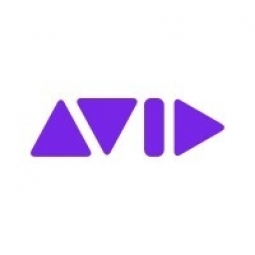
|
Avid Everywhere: The Secret Behind Mission Impossible: Rogue Nation's Success
The production team of the highly anticipated action film, Mission Impossible: Rogue Nation, faced a daunting challenge. They were tasked with delivering the final cut of the film five months ahead of schedule due to a change in the release date. This required the team to rethink their editing workflow and collaborate in entirely new ways. The team had only 12 weeks to lock in the cut after the end of the shoot, with the first screening taking place just nine days after the shoot. The sound team was also under immense pressure, tasked with delivering a complex Dolby Atmos mix made up of more than 400 tracks in just a few months. The early stage of editing meant they had to mix for individual sequences, rather than entire reels.
|
|
|

|
Avid's Integrated Production Workflow Revolutionizes Nine Network Australia's Content Creation
Nine Network Australia, one of the five free-to-air broadcasters in the country, was facing a significant challenge in producing high-quality, creative, and regionalized promotional content under tight deadlines. The network had expanded its service regions and added more channels, while also transitioning from analog to digital signaling. This growth, coupled with the industry's shift to file-based media acquisition and distribution, increased the pressure on Nine Network to produce up to 300 promotional content pieces per day. The network's existing production setup, an aging, tape-based system with disconnected storage architecture, was struggling to keep up with the volume and pace. The lack of integration and outdated systems were stifling creativity, reducing productivity, and making it difficult to target specific audiences and demographics. The network needed a solution that would streamline their production process, eliminate points of failure, and allow for last-minute creative changes without impacting schedules.
|
|
|

|
Leveraging IoT in Film Production: A Case Study on Paddington 2
The challenge was to edit a complex CGI-filled timeline for the silver-screen return of one of the most famous fictional children’s characters, Paddington Bear. The team had to bring to life a beloved character in a live-action/CGI-animated sequel, Paddington 2, with complex production requirements and a leading character that wasn’t flesh and bone. The CGI bear brought many challenges to the first film, including visual effects demands. The editing process was complicated by the fact that the lead character was invisible and someone off-camera read out his lines. The film’s process demanded an in-the-moment approach, with a fast, rolling turnover schedule from day one. The process saw mismatched animation sequences with various evolutionary states of the bear animation frequently exchanged between the editing team and Framestore.
|
|
|

|
Avid's Role in the Epic Journey of Star Wars: The Force Awakens
The challenge was to edit the long-awaited, VFX-heavy film Star Wars: The Force Awakens. The film was shot using a variety of cameras and formats, including 35mm, 65mm, digital, and 3D for final delivery. The film was also shot primarily at 35mm cinemascope and 65mm IMAX for some scenes. The editing team had to manage these different formats and ensure a seamless final product. Additionally, the film was a top-secret project, requiring secure storage solutions for the files. The team also had to incorporate a temporary 5.1 surround sound mix, which was a new workflow for them.
|
|
|

|
Revolutionizing Music Composition: Steve Reich and Sibelius Software
Steve Reich, a renowned American composer, was in need of a tool that could aid him in creating the innovative, cross-genre musical compositions that have earned him multiple Grammy Awards and worldwide recognition over the past five decades. Reich's music is known for its blend of western classical music, non-Western music, American vernacular music, and jazz. His career has been marked by innovation and groundbreaking musical compositions that blend genres. However, the process of composing such complex pieces was challenging. Reich recalls a time in the mid-1980s when the bill from a copyist for a large and complex piece was greater than his actual commission, leading him to seek a more efficient solution.
|
|
|
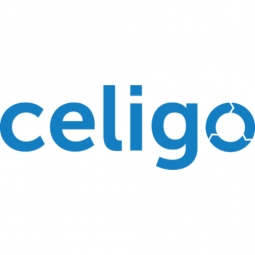
|
GetBusy's Operational Transformation with Celigo's Integration Solutions
GetBusy, a software company specializing in document management and productivity apps, was facing challenges with their homegrown ERP/CRM system. The system was inefficient, making it difficult to access data, especially when salespeople were on the move. It was nearly impossible to find invoices or see what products each customer used, leading to a lack of visibility into the state of each customer and prospect. This was a significant challenge to GetBusy's business model, which operates on custom configuration, where product and pricing are individualized for each customer. To modernize their operations, GetBusy selected Zendesk for Support and Customer Success management, NetSuite for their ERP, and Salesforce for their CRM. However, simply migrating to these new applications wouldn't solve all their problems. They needed complete data synchronization across these applications, meaning customer invoices and billing from NetSuite needed to be accessible in Salesforce to accurately assess custom pricing for each deal. Additionally, recurring billing from other product lines and SaaS business models processed on Chargebee also needed to be integrated with NetSuite.
|
|
|

|
Headspace Enhances Efficiency with Salesforce-NetSuite Integration App
Headspace, a rapidly growing online platform for meditation, faced a significant challenge in managing its sales and finance data. The sales team had adopted Salesforce as their customer relationship management (CRM) platform, while the finance team used NetSuite as their enterprise resource planning (ERP) system. This led to a situation where sales and finance data had to be manually re-entered into the two separate applications, a time-consuming process that was prone to human errors and led to longer billing and reconciliation cycles. Nicole Punelli, the Sales Finance Manager, recognized this issue and understood that the finance team was not equipped to handle the increase in manual data duplication between Salesforce and NetSuite. Furthermore, Nicole, while an expert in Salesforce, had minimal experience with NetSuite, and needed a vendor that could provide the necessary expertise for a successful integration.
|
|
|

|
Imbema's Digital Transformation Journey with Celigo's Integration Solutions
Imbema, a 75-year old company, embarked on a global initiative to modernize and transform its operations. The company aimed to transition all of their systems into cloud-native, digital applications, with the goal of connecting all suppliers and customers, and streamlining operations. The first step in this digital transformation was to transition from their historical ERP into NetSuite, and find a way to integrate it with EDI. However, the lack of integration meant that Imbema-Holland’s sales orders required a manual credit check through a separate Atradius system. This process was time-consuming, with each of the 1,600 orders processed monthly taking 20-30 minutes to log, leading to delays in fulfilling orders and a poor customer experience. Furthermore, Imbema-Holland wanted to create, manage and monitor their own systems and integrations with a lean IT team. They needed a manageable, centralized platform that was extensible and supported modern standards.
|
|
|

|
Ready Seal Streamlines Salesforce Adoption with Celigo’s Integration Platform
Ready Seal, a company specializing in wood stain and sealer products, was facing a challenge in adopting Salesforce as their CRM service provider. The company used NetSuite to process orders from distributors and wholesalers, but their sales organization needed a better CRM that could be accessed remotely from mobile devices. NetSuite’s native CRM capabilities did not meet their needs. However, using a separate CRM from their ERP systems would create a gap in associating orders to emails and limit data access within the organization. The challenge was to find a way to synchronize Salesforce with NetSuite quickly and easily.
|
|




